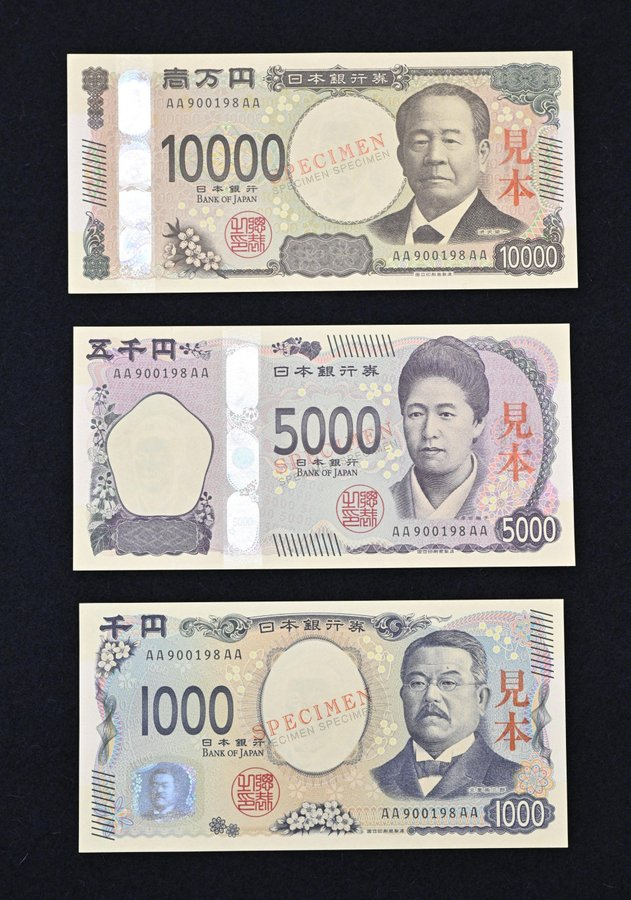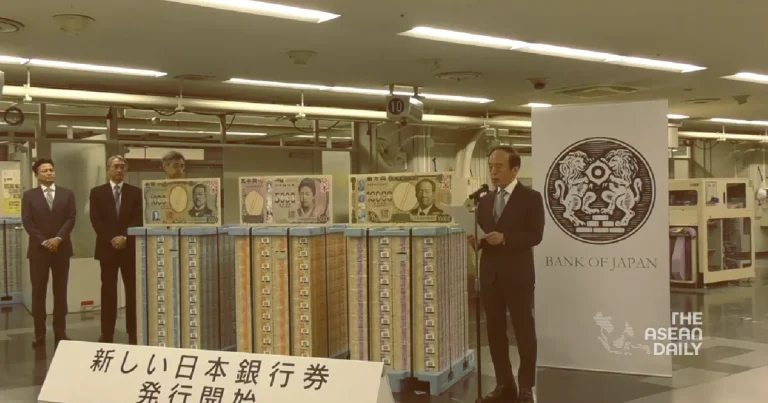3-7-2024 (TOKYO) Japan has unveiled its first new banknotes in two decades, adorned with cutting-edge security features that promise to revolutionize the nation’s currency. The new notes, which began circulating on July 3, feature three-dimensional portraits of esteemed historical figures, employing a groundbreaking technology that Japan’s National Printing Bureau claims is a world-first for paper money.
The innovative banknotes utilise printed patterns to generate holograms of the portraits, which appear to face different directions depending on the angle from which they are viewed. This remarkable feat of engineering is expected to pose a formidable challenge to counterfeiters and further bolster the integrity of Japan’s currency.
While existing banknotes will remain in circulation, the introduction of the new bills has prompted a nationwide scramble among businesses to upgrade payment machines. Train stations, parking lots, and even humble ramen shops are racing against the clock to ensure their systems can accommodate the revamped currency.
Complementing these technological advancements is the government’s push for a more digitized economy, encouraging both consumers and businesses to embrace cashless transactions as a means of enhancing efficiency and productivity.
The new 10,000-yen (approximately S$84) note bears the portrait of Eiichi Shibusawa (1840-1931), a pioneering figure often referred to as “the father of Japanese capitalism,” who founded the nation’s first bank and stock exchange. The 5,000-yen bill honours Umeko Tsuda (1864-1929), an educator who established one of Japan’s earliest women’s universities, while the 1,000-yen note depicts the groundbreaking medical scientist, Shibasaburo Kitasato (1853-1931).
Currency authorities have ambitious plans to print approximately 7.5 billion newly-designed bills by the end of the current fiscal year, adding to the already staggering 18.5 billion banknotes worth 125 trillion yen that were in circulation as of December 2023.
Addressing a ceremonial event marking the unveiling of the new notes, Bank of Japan Governor Kazuo Ueda underscored the enduring importance of cash, stating, “Cash is a secure means of payment that can be used by anyone, anywhere, and at any time, and it will continue to play a significant role” even as alternative payment methods gain traction.
Despite the central bank’s ongoing experiments with digital currencies, the Japanese government has yet to make a definitive decision on whether to issue a digital yen.
The renewal of Japan’s paper money, the first since 2004, has prompted businesses to scramble to upgrade their payment machines to accommodate the cash-loving customers. While cashless payments in Japan have nearly tripled over the past decade, accounting for 39 percent of consumer spending in 2023, this figure lags behind global peers. The government aims to increase this share to as high as 80 percent to improve productivity.

Approximately 90 percent of bank ATMs, train ticket machines, and retail cash registers are prepared to accept the new bills, but only half of restaurant and parking ticket machines are ready, according to the Japan Vending Machine Manufacturers Association. Nearly 80 percent of the 2.2 million drink vending machines nationwide also require upgrades.
For small business owners grappling with the challenges of inflation, the additional investment required for compatible machines has added to their financial burdens. Shintaro Sekiguchi, who spent about 600,000 yen to replace ticket machines at three ramen shops he runs in southern Tokyo, lamented, “The machine replacement has no sales impact, so it’s only negative for us, on top of rising costs of labor and ingredients.”
Despite the desire for cutting-edge machines that could offer customers various payment options, the modest profit margins of his ramen business forced Sekiguchi to settle for cash-only equipment. “Our ramen doesn’t have high unit prices, so running the shop for a day or two would hardly pay for the replacement,” he added.




